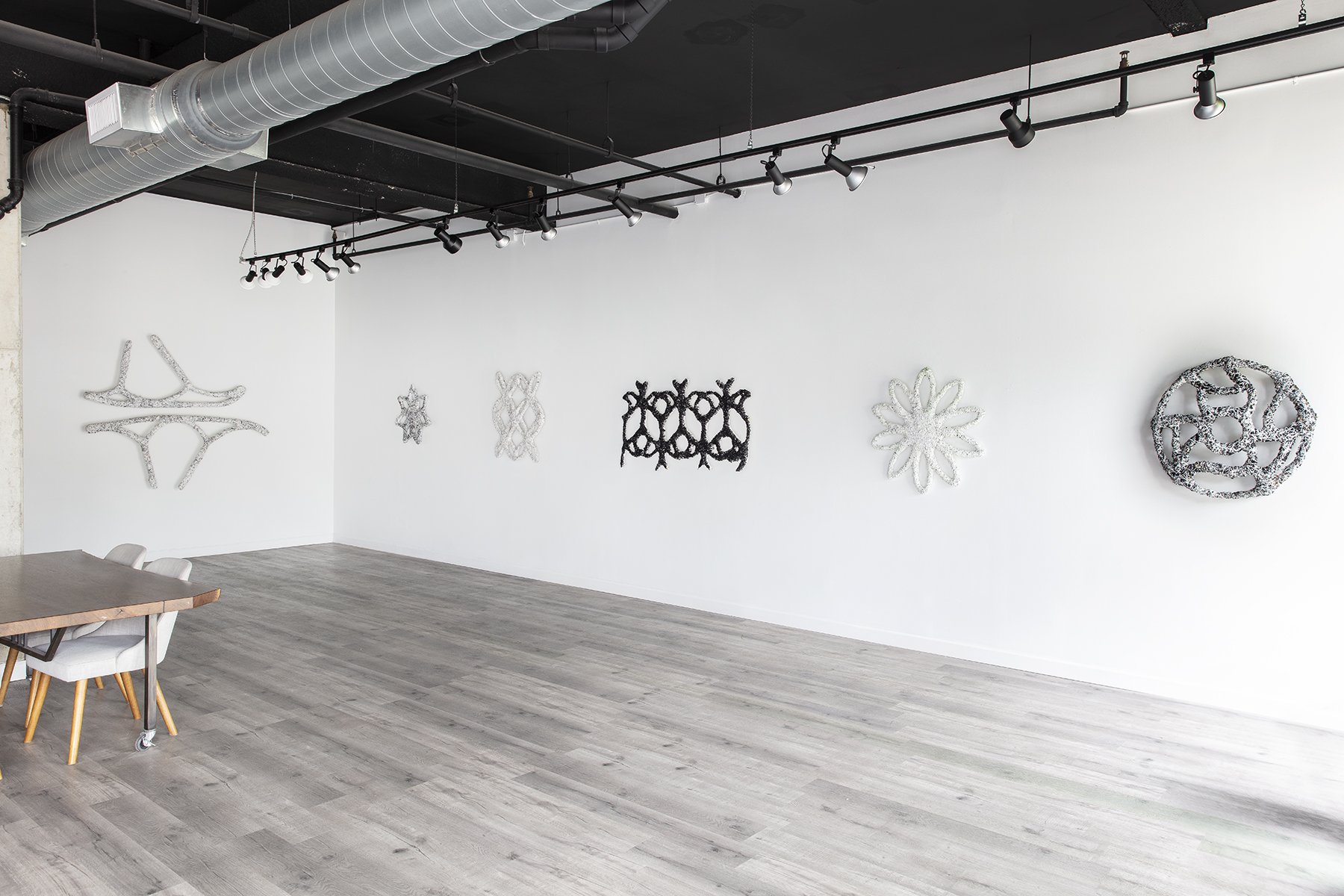
Simon Anton
Plastic Future / Plastic Past
View Exhibition
"Plastic Future / Plastic Past" explores the layered, turbulent, and transformational history of Detroit through the lens of plasticity - both as material and metaphor. Rooted in the artist Simon Anton’s background in architecture, material design, and sculpture, this body of work investigates how the city’s architectural ornamentation, industrial legacies, and cultural narratives can be reinterpreted through experimental processes using recycled plastics.
What better term than “Plasticity” to describe the rapid sea changes from Anishinaabe land, to Pontchartrain, to the Last Stop on The Underground Railroad, to the Paris of the Midwest, to The Motor City, to the “Post-Industrial”, to the Afro-Futurist. This evolution embodies a plasticity that is not smooth or benign, but jagged, violent, and filled with struggle. These transformations are not linear or complete, but stratified, leaving behind material and symbolic residues that continue to shape the city’s identity. Through sculptural wall works and community-informed installations, Anton remaps this terrain using plastic waste as both artifact and medium.
Anton’s process is a fusion of hand-built steel armatures, electrically heated wire, and molten recycled plastics - techniques that transform industrial detritus into organic, coral-like growths. These forms reimagine the grandeur of Detroit’s historical ornamentation, such as the bronze motifs of the Fisher Building, while grounding them in contemporary material realities. The result is a new kind of monument - one that embodies memory, contradiction, and resistance.
Developed in conversation with Detroit historians, makers and youth, the work is supported by a living archive of interviews, photographs, LiDAR scans, and video of the project. These supplemental materials were integral to the sculptural forms, shaping the narrative architecture of each piece. By fusing architectural research, found materials, and speculative design, "Plastic Future / Plastic Past" asks: How do we carry the weight of our collective past? What do our materials say about the futures we’re building?
This project continues the journey begun at the Venice Architecture Biennale, where Anton first expanded this methodology at scale. Now, it returns home, transformed, to Detroit, where it was born.
This project was created with the support of the Knight Foundation. Special thanks to students from Hamtramck High for participating in Anton’s summerlong artist workshop exploring themes of architecture and public art.
SIMON ANTON
Simon Anton (b. 1988, based Detroit, MI; he/him) is a multi-disciplinary artist, designer, and educator that collaborates across the fields of architecture, interior design, furniture, art, and jewelry. He is the co-founder of Thing Thing, a design collective that experiments in the transformation of post-consumer, hand-recycled polyethylene plastic sourced from surrounding communities and from industrial manufacturing. Their program “Transforming Trash,” works with youth in Detroit and the Big Island of Hawaii to transform community plastic waste into art. Anton’s work has been presented at the Venice Architecture Biennale, Hong Kong Shenzhen Biennale, Expo Chicago, Museum of Contemporary Art Detroit and the Venice Architecture Biennale. Anton received a Master of Fine Arts in 3D Design from Cranbrook Academy of Art.
Simon Anton repurposes plastic waste into sculptural works that echo the elegance of architectural ornament while speaking to the urgency of our material present. Grafting discarded plastics onto sculptural frameworks, he reimagines design relics as futuristic artifacts—hybrids of history, utility, and excess. These works feel unearthed from a speculative excavation, where classical forms and contemporary detritus converge. Sourced from personal and industrial waste streams, Anton’s process reflects a circular logic—one that questions permanence, beauty, and what we leave behind. In a world where plastic is inseparable from the built environment, his sculptures offer both critique and promise.








